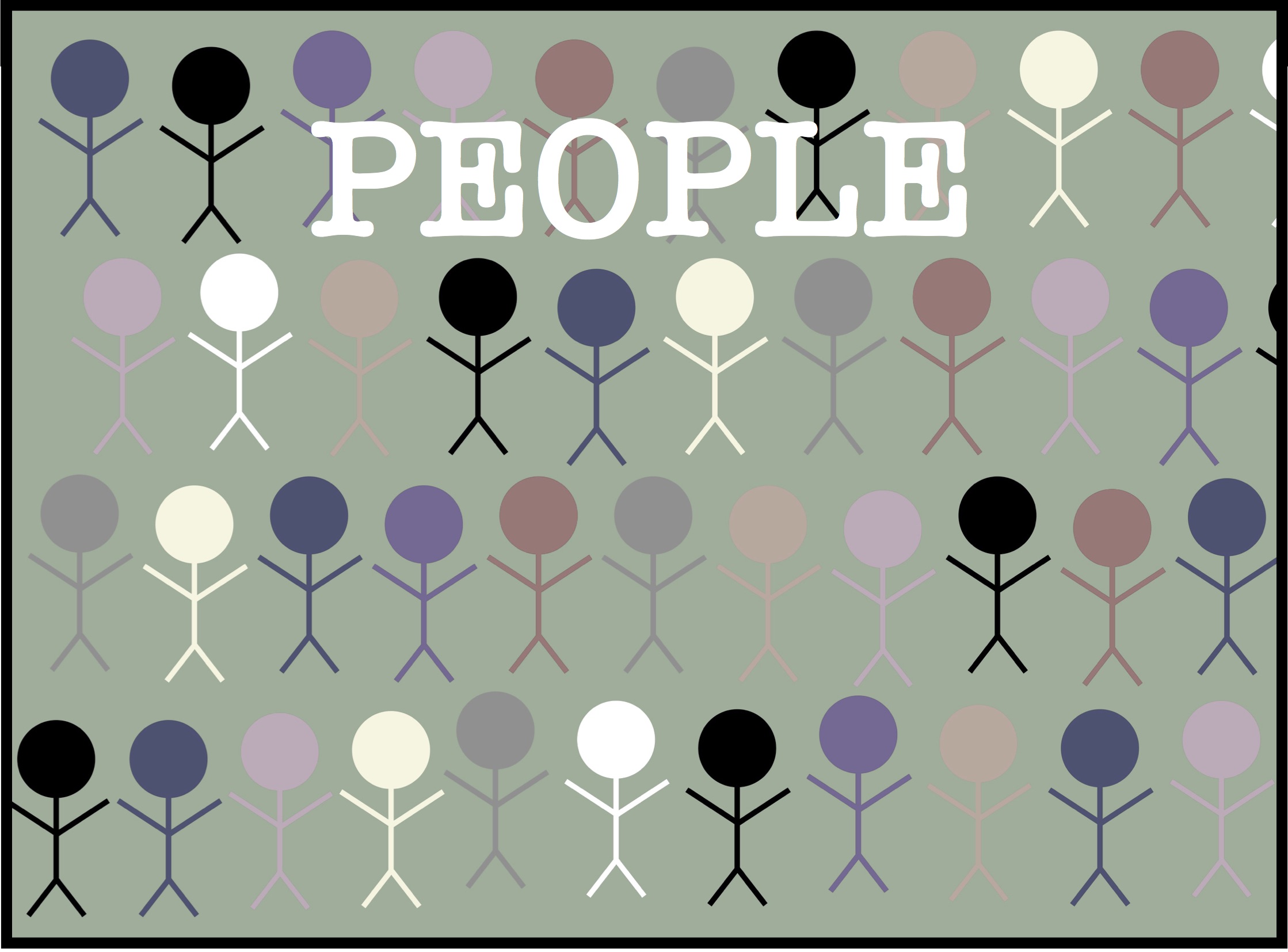

Olivia Chu (Bryn Mawr College), Ryan Murphy (University of South Australia), Ananth Srinivas (LSU Health New Orleans), and Sara Hamis (Uppsala University).
-
News - updates from:
- People - Interview with Professor Richard Bertram, Florida State University
- Editorial - SMB Principles of Community and engaging with SMB
- Featured Figure - Kit Gallagher, University of Oxford
- In our next issue...
To see the subsections of this issue, click the links at the above items.
Contributing content
Issues of the newsletter are released four times per year in Spring, Summer, Autumn, and Winter. The newsletter serves the SMB community with news and updates, so please share it with your colleagues and contribute content to future issues.
We welcome submissions to expand the content of the newsletter. The next issue will be released in the Winter, so if you would like to contribute, please send an email to the editors by the start of February 2026 to discuss how your content can be included. This could include summaries of relevant conferences that you have attended, suggestions for interviews, professional development opportunities etc. Please note that job advertisements should be sent to the Member Forum rather than to the newsletter.
If you have any suggestions on how to improve the newsletter and would like to become more involved and/or contribute, please contact us at any time. We appreciate and welcome feedback and ideas from the community. The editors can be reached at newsletter@smb.org.
We hope you enjoy this issue of the newsletter!
Olivia, Ryan, Ananth, and Sara
Editors, SMB Newsletter
News Section

By Sara Hamis
In this issue of the News section, we highlight the updates from the Bulletin of Mathematical Biology (BMB), SMB Subgroups, and Royal Society Publishing. Read on below.
From BMB
SMB Subgroup Updates
Formation of SMB Subgroup on Reaction Networks
Dear Colleagues,
We are excited to report that the Society for Mathematical Biology has approved the formation of a new Subgroup on Reaction Networks. This subgroup will bring together scientists from different areas studying the mathematics of reaction networks, both stochastic and deterministic, and including applications such as chemical reaction computing, cellular dynamics, and population level dynamics. The approval was the result of a petition signed by as many as 70 participants of the 2024 annual SMB conference in Seoul, Korea. We expect to organize satellite meetings and special sessions during annual SMB meetings, as well as collaborative workshops, virtual seminars and conferences, in addition to other initiatives.
At this early stage we are still finalizing the bylaws and delineating specific goals and activities of the new subgroup. We welcome all members of the community to participate, either by volunteering to serve in some capacity or simply by indicating their interest in the subgroup. Feel free to fill out the following survey, send us a line, or simply stay tuned for our inaugural set of activities at the 2026 SMB meeting in Graz, Austria.
Google Form link: https://forms.gle/qaDgSoPXhACSkKpx9
Best Regards,
Greg Rempala and Hye-Won Kang
Interim Co-Chairs
Immunobiology and Infection
The Immunobiology and Infection subgroup will be holding elections for the Chair and Secretary positions in the new year. Please keep an eye out for details about voting procedures and timelines. We are also launching a newsletter with research and workshop/conferences updates, and open positions shortly! More info to follow.
Cell & Developmental Biology (CDEV)
- The CDEV Subgroup hosted a wonderful Job Market Webinar on November 6th for students and postdocs who are preparing for the job market! The webinar was led by Anna Nelson (University of New Mexico) and Giulia Celora (University of Oxford), who both serve as SMB CDEV Subcommittee Members.
- The CDEV Subgroup will be hosting a Virtual 3-min Research Session! Think three pages for a research statement is short? What about distilling your work into just three minutes with the help of a single slide? In Spring 2026, we invite researchers at all career stages to take on this CHALLENGE and join other members of the SMB CDEV community for a virtual gathering aimed at offering researchers a platform to share their scientific interests and vision in a friendly and informal setting. Presentations should be accessible to a non-specialist audience and highlight the broader significance of your work. Sign Up Here: https://forms.gle/FugESCrwYcocPazR7
- The CDEV Subgroup will have a mini-symposium at the 2026 SMB/ESMTB Conference in Graz, Austria! Please be on the lookout for information on our speakers.
- Follow our Blog: https://smb-celldevbio.github.io/blog/.
Mathematical Oncology
- The SMB Oncology welcomes Rebecca Bekker (MD Anderson Cancer Center) as new subgroup co-chair. We thank Linh N Huyn for her dedicated engagement as co-chair for the past two years.
- Social media: We like to encourage new members to check out the Social media presence of the SMB subgroup. https://mathematical-oncology.org/smb-mathonco. There you can post your articles in the Newsletter, read our blogs and even write a blog, make some art, and sign up for the weekly newsletter.
Upcoming Conferences and Programs
Biomath 2026
The next conference from the series of International Conferences on Mathematical Models and Methods in Biosciences (Biomath) takes place at the Bolyai Institute of the University of Szeged, Szeged, Hungary, from 15 to 20 June 2026. Website: www.math.u-szeged.hu/biomath2026
The series is devoted to recent research in life sciences based on applications of mathematics as well as mathematics applied to, or motivated by, biological studies. It is a meeting forum for researchers who develop and apply mathematical and computational tools to the study of phenomena in the broad fields of biology, ecology, medicine, biotechnology, bioengineering, environmental science, etc.
What Biomath 2026 offers:
- Presentations by top class keynote speakers.
- Opportunity to share your research.
- Opportunity to publish in the journal Biomath (Scopus, DOAJ, MathSciNet, zbMATH), https://biomath.math.bas.bg/biomath/index.php/biomath
- Opportunity to meet and interact with researchers in this interdisciplinary area, build links, establish collaborative networks.
- School for Young Scientists for kick starting an academic career in Biomathematics.
- Research stimulating environment at the Bolyai Institute of the University of Szeged.
- Experiencing diverse cultures and backgrounds as well as the rich historical heritage of the location.
The Biomath conferences additionally offer a relaxed environment with lots of opportunities for discussion and meeting new colleagues.
Details on participation can be found on the conference web site: www.math.u-szeged.hu/biomath2026
Sydney Mathematical Research Institute (SMRI) International Visitor Program (IVP)
The 2026 February Round applications are now open. Researchers in the mathematical sciences from international universities who wish to do research at SMRI either individually or as part of a group of collaborators are warmly invited to apply.
This round is for visits taking place between January – December 2027 for general applicants; and September 2026 – December 2027 for Aus & NZ citizens working overseas.
Applications will close on Tuesday 17th February 2026 (11:59 pm AEST). (NB: The next application period will be open between June – August 2026).
Applications (with the information requested in the terms and conditions) must be made through the webform found on the IVP webpage.
Royal Society Publishing
Royal Society Publishing has recently published a theme issue of Interface Focus entitled Integrating Ethics into Infectious Disease Modelling: Case Studies and Perspectives from the COVID-19 Pandemic organised by Cameron Zachreson and Joel Miller and the articles can be accessed at https://bit.ly/RSFS154.
Additionally, the following theme issues from Philosophical Transactions B have been recently published:
A solid base for scaling up: the structure of numeration systems compiled and edited by Andrea Bender, Jean-Charles Pelland, Simon J Greenhill and Mary Walworth and the articles can be accessed directly at www.bit.ly/PTB1937
Origins of life: the possible and the actual compiled and edited by Ricard Solé, Chris Kempes and Susan Stepney and the articles can be accessed directly at www.bit.ly/PTB1936
"A mathematical theory of evolution": phylogenetic models dating back 100 years compiled and edited by Noah A Rosenberg, Tanja Stadler and Mike Steel and the articles can be accessed directly at https://bit.ly/PTB1919
And from Philosophical Transactions A - the following theme issue recently published:
Biological fluid dynamics: emerging directions compiled and edited by Smitha Maretvadakethope, Marco Polin, David J Smith and Laurence G Wilson and the articles can be accessed directly at www.bit.ly/TransA2304
A print version is also available at the special price of £40.00 per issue from sales@royalsociety.org
People Section
By Ryan Murphy

Read our interview with Professor Richard Bertram, Chair of the SMB Mathematical Neuroscience subgroup, member of the SMB Board of Directors, and Professor in the Department of Mathematics at Florida State University.
Editorial
By Sara Hamis and Olivia Chu

Principles of Community
During the General Assembly meeting at the 2025 SMB Annual Meeting in Edmonton, Canada, the SMB community voted to adopt a set of Principles of Community for our society. Anyone can now access the adopted principles on the SMB website by going to the Community --> Principles of Community tab.
These guiding Principles of Community were developed by the SMB Community, Inclusion and Engagement (CIE) team (formerly the Diversity, Equity, and Inclusion team). The document reiterates the society’s goals and mission and outlines ethical professional conduct and research practices; guidelines for supporting a diversity of views, opinions, and identities; and guidelines for respectful interactions. The team used codes of conduct from several professional organizations (SIAM, AMS, MAA, Society for Freshwater Science, etc.) to inform these guiding principles. The society is interested in using these Principles to further develop a Code of Conduct for the community, which requires legal counsel and a clear framework for reporting incidents and for follow-up measures. The CIE team welcomes any suggestions and feedback from SMB community members.
- SMB Community, Inclusion and Engagement Team
Engaging with SMB
- Subscribe to Forums:
-
- On the landing page of SMB (https://smb.org/), go to the Communications tab
- Under the Communications tab, select Member Forum
- In the top left, select the "Subscribe to forum" link
- This will prompt you to log in with your SMB username and password
- Once logged in, select the "Subscribe to forum" link.
- If you want to make a post to the forums (emailed out to other SMB members that are subscribed), click the "Create topic" button. This could be to advertise a workshop, job/Ph.D. openings, etc.
- Listen to the SMB Podcast, Biology in Numbers, on Apple Podcasts or Spotify.
- Follow us on social media
-
Featured Figure
By Ananth Vedururu Srinivas
In this issue, we feature the work of Kit Gallagher and co-authors in their recent paper, Deriving Optimal Treatment Timing for Adaptive Therapy: Matching the Model to Tumor Dynamics.
We asked Dr. Gallagher to tell us a bit more about his work:
Gallagher et al. (2025) investigate how enforcing clinically realistic monitoring windows affects the treatment benefits of adaptive therapy (AT). AT aims to extend a patient’s time to progression (TTP) by maintaining a drug-sensitive subpopulation to compete with & suppress resistant cells. However, prior theoretical treatment protocols have assumed continuous tumor monitoring, which is unrealistic in standard clinical practice.
When simulating AT with discrete monitoring, the numerical simulations in Panels A and B show that shorter monitoring intervals enable a greater TTP, as they allow higher treatment thresholds that maximize competitive suppression of resistant cells. However, the heatmap in Figure 3(d) demonstrates a critical limit to this benefit: a ‘premature failure’ region (upper right) where infrequent monitoring combined with high thresholds allows the sensitive population to grow beyond the progression limit between measurements. To determine the optimal treatment protocol, Gallagher et al. (2025) derive an analytic expression for this boundary, defining the maximum safe threshold N* for a given interval (plotted in Panel C). This analytic curve matches the region of maximum TTP observed in the numerical simulations (Panel D), confirming that the standard ‘AT50’ protocol is optimal only for a specific appointment frequency.
The results characterise a quantifiable trade-off: maintaining a larger tumor burden (N*) maximizes competitive suppression of resistant cells and extends TTP, but requires more frequent clinical appointments to maintain tumor control. The authors’ analytic framework enables clinicians to balance the challenges of more frequent visits against the therapeutic benefit of extended tumor control. For details, see Gallagher et al. (2025).

In our next issue...
- Get to know our new Newsletter editors
- Read about research, teaching, and mentoring activities at small liberal arts colleges (SLACs) and primarily-undergraduate institutions (PUIs)
